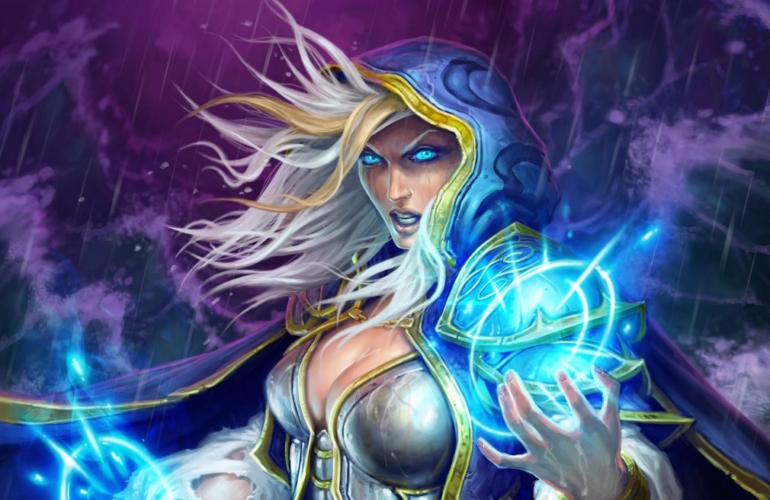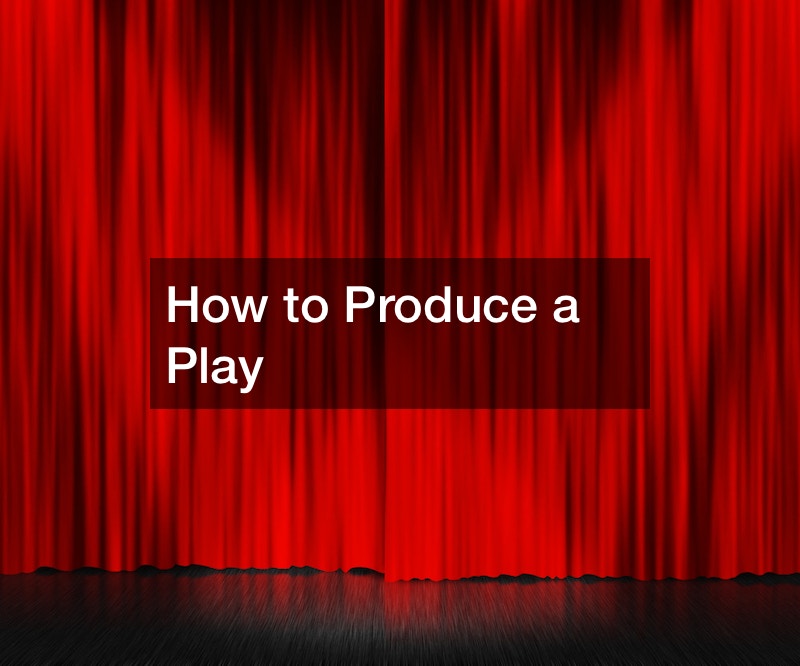From the World of Warcraft website:
“Students gifted with a keen intellect and unwavering discipline may walk the path of the mage. The arcane magic available to magi is both great and dangerous and thus is revealed only to the most devoted practitioners. To avoid interference with their spellcasting, magi wear only cloth armor, but arcane shields and enchantments give them additional protection. To keep enemies at bay, magi can summon bursts of fire to incinerate distant targets and cause entire areas to erupt, setting groups of foes ablaze.
Masters of ice can command blizzards that tear into flesh and limit movement. Should enemies manage to survive this assault; the mage can shrink them into harmless sheep in the blink of an eye. Powerful magi can even generate enhancements and portals, assisting allies by sharpening their minds and transporting them instantly across the world.”
As the name suggests, Hearthstone’s Mage class revolves around the effective use of spells, whether it’s fire, ice, or arcane magic. Mages are great at utilizing their spells to control the board, freezing large groups of enemy minions or removing them from play using powerful direct damage spells.
Although the Mage class lacks armor or healing powers, they can still be a versatile class to use, especially if you favor mid-game or late-game decks that unleash huge amounts of damage at turn 6 upwards. Mages also have access to a lot of tech cards like Frost Nova or Polymorph, both of which are designed to buy you time to draw a more useful card or to neutralize a high-level enemy minion, respectively.
Mages are also one of four classes to have access to Secrets: a type of spell card that has a delayed, hidden effect that will only trigger if a specific action takes place. With more than a dozen Secrets in their arsenal, the Mage class also has the largest number of Secrets to choose from.
In Hearthstone, the main Mage class hero is Jaina Proudmoore, possibly the most powerful human sorcerers alive in Azeroth today and the current Lord Admiral of Kul Tiras. 2 other alternate heroes, Khadgar and Medivh, are available for purchase.
Hero Power and Unique Mechanics
The hero power of Hearthstone’s Mage class is Fireblast, a 2-cost 1 damage spell that can target either your opponent’s face or any minion on board (yours included). It’s one of the most useful hero powers in the game, able to deal small, but constant damage, or trigger minion abilities, neutralize a Divine Shield minion, or simply to remove a minion from play if their health is low enough.

With Justicar Trueheart or Baku the Mooneater, the Mage’s Fireblast is replaced with Fireblast Rank 2, upgrading your hero power to deal 2 damage. With Frost Lich Jaina, the Mage’s hero power is replaced with Icy Touch, an ability that lets you deal 1 damage and summon a 3/6 Water Elemental if the ability kills a minion, which is very useful if your board is empty or if you’re going against a Zoo deck.
Although they aren’t exactly unique (Paladin, Hunter, and Rogue class all have Secrets), Mage Secrets distinguish themselves for arguably being the most powerful (and most expensive; Mage Secrets are 3 mana compared to Paladin’s 1-cost, and Hunter and Rogue’s 2-cost) and most utilitarian. For example, the Mirror Entity Secret will give your Mage an exact copy of the next minion your opponent plays. When casting strategically, this can give you anywhere between a 0 and 10-cost minion for 3 mana. If your opponent makes the mistake of playing a high-damage minion (for example, Deathwing), Mirror Entity will summon a copy for you that you can immediately use in your turn, either to neutralize your opponent’s Deathwing or to deal 12 damage to your opponent’s face.
Likewise, Vaporize can provide you with a cheap removal spell that can turn the tide of battle, especially if the opponent makes the mistake of attacking your face with its highest damaging minion. Because Mage lacks any armor or healing spells, the Ice Block and Ice Barrier Secrets are your best bet into stalling any lethal damage and increasing your survivability (albeit for 1 turn or for 8 armor, respectively). It’s not the best, but it can be crucial in late-game scenarios.
Because Secrets can be a huge part of a Mage deck, the class also has access to various cards that synergize well with Secrets. For example, Arcanologists will draw a secret out from your deck, while Kirin Tor Mage will reduce its cost to 0.
Aside from Secrets, Mage decks can also be constructed around specific themes, such as:
Burn – Burn Decks are perfect for aggro players because Mage has the most number of burn spells, which are generally spells that deal direct damage, either to a minion or to your opponent’s face. Spells like Pyroblast are usually used to either set up a one-turn kill or next turn lethal, while spells like Cinderstorm can be used for cheap early damage (if no other enemy minions are on board). Fireball is one example of an essential Burn Deck card, as it gives you 6 damage for 4 mana.

Freeze – In contrast to Burn Decks, Freeze Decks are for tempo/control players who like to keep enemy minions at bay and pick them off one by one. Although other classes also have freeze spells (Shaman’s Frost Shock comes to mind), the Mage class has more and arguably better freeze spells that can do a variety of things, whether it’s direct damage (Frostbolt or Ray of Frost), Area of Effect (Frost Nova or Blizzard), and even minions that can both damage,freeze, and steal health (Water elemental).

Control – Direct damage is cool and all, but a real Mage will be a master of controlling the board in every turn. With its large number of cards that deal AoE damage, Mage Control Decks can be vital to players wanting to rank up to Legend. These decks usually revolve around AoE spells that can be played in every turn: Shooting Star and Arcane explosion can be used for early game control, while spells like Blizzard and Flamestrike can be used to either clean up the board or keep enemy minions at bay. Minions that increase spell damage are also used in this deck to augment your spells damage.

Strengths and Weaknesses
Strength:
Deals Direct Damage – Unless you play a meme deck, which, while fun, almost always has low win rates because of its reliance on RNG or for its difficulty to set up, it’s really hard to get an OTK every single match. Of course, unless you’re playing Mage. Burn decks are the best example of utilizing the sheer damaging power of Mage spells, with some players playing an entire match without using their minions to hit the opponent’s face. Of all the classes, direct damage spells are the Mage’s specialty. We all know the nervousness when we’re down to our last 10 health and our Mage opponent suddenly emotes with “Well Played”, because we all know what that means: hadouken (Pyroblast) to the face.
Board Clear for Days – We’ve all been there: you spend multiple turns setting up your board with the perfect balance of minions, only for your Mage opponent to top deck some ridiculous AoE spell that just wipes out your side of the board. But that’s what Mage does really well; piss off opponents with board clear after board clear after board clear after board clear…
Stalling for Time – Imagine this: you’re up against a Mage; you have a full board of high damage minions, and you managed to bring them down to 10 health. The next turn is lethal for you. Then, the Mage casts Frost Nova. No biggie, you pass on your next turn. Then your opponent drops a Taunt minion and another Frost Nova. Ok well, at least they’re out of those. But then they bring out a Blizzard and start dealing damage. Now you’re in trouble. And then, right when you think you can catch up, that top deck Pyroblast. No matter the RNG, a Freeze Deck mage can buy themselves as much time as they like.
Weakness:
No Spells, No Win – Like what was said earlier, spells are a Mage’s bread-and-butter, with many decks relying on spells to deliver lethal damage (even decks that revolve around summoning high-value minions require Conjurer’s Calling). That spells are the Mage’s greatest strength is also their greatest weakness; without spells, your Mage can’t do much. Yes, minions like Astromancer and Khadgar all create minions of a random value, but every other minion in a Mage’s repertoire is so perfectly synergized with spells that, without the latter, they’re fairly useless. For example, Mana Wyrm is a pretty powerful card that, if not removed from the board, can easily become a threat, but only if you have the spells to buff it up. Otherwise, it’s just a 1/3 minion that can be destroyed pretty easily.
“Stop Healing, I’m Running Out of Cards!” – Direct damage is great and all, but what happens if your opponent has a deck built around healing (like heal Druid or Priests)? Unless you’re extremely smart about playing around them, you’ll soon find yourself running out of cards and be left with fairly vanilla minions on board.
Heal Thyself? Nah – So you’re locked in a pretty tense battle, with you and your opponent whittling at each other’s health. Frostlich Jaina gave you 5 armor, but that’s pretty much gone, just like your water elementals. You’re out of Ice Barrier, and you’ve used up the last of your Ice Block. How do you save yourself and gain armor?
Unless you have Jaina’s DK, there’s really no other way to heal. But even with DK, if your opponent doesn’t plop down a 1-health minion for you to convert into a life-stealing water elemental, then you’re pretty much screwed.
Winning With a Basic Mage Deck?
With Hearthstone expansions costing more and more every release, new players are usually put at a disadvantage, especially if they don’t have enough dust to craft a few legendaries.
But it’s not the cards you have but how you play them, right? Well, yes and no. Legendaries and other special cards will most definitely increase your chances of winning, but a basic deck, if played properly, can hold their own and even win you more than your fair share of matches. Yes, it’s going to be extremely difficult to get to Legend with Bloodfen Raptor, but impossible? Nah.
I’m not going to sugarcoat it though: running a deck in any meta with just basic, common, and rare cards are really difficult, BUT it might be enough to earn you just enough gold to get you a pack. Aside from that, learning how to use a basic deck is good in some ways: it gets you to think a little more critically, it helps you get used to the class you’re using, and, to be honest, it’s really good bragging rights (not to mention humiliating to your opponent) when you beat a well-crafted deck with “beginner” cards.
Basic decks are also cheap, dust-wise: in fact, you probably will already have most of these cards when you finish the tutorial stage, making them very accessible to new players. Some cards you’ll have to craft, but even then, it won’t cost you as much as, say, an Exodia Mage deck.
Here’s an example of a Basic Mage deck:
Basic Mage Deck
Arcane Dust: 0
| Mana Cost | Card | Amount |
| 2 | Frostbolt | 2 |
| 3 | Arcane Intellect | 2 |
| 4 | Fireball | 2 |
| 4 | Polymorph | 2 |
| 4 | Water Elemental | 2 |
| 7 | Flamestrike | 2 |
| 2 | Acidic Swamp Ooze | 2 |
| 2 | Bloodfen Raptor | 2 |
| 3 | Razorfen Hunter | 2 |
| 3 | Shattered Sun Cleric | 2 |
| 4 | Chillwind Yeti | 2 |
| 4 | Gnomish Inventor | 2 |
| 4 | Sen’Jin Shieldmasta | 2 |
| 6 | Boulderfist Ogre | 2 |
| 6 | Stormwind Champion | 2 |
Because we’re dealing with just basic cards, more veteran players might find this deck very restrictive; however, for new players, this is enough to get you from rank 50 to 20, maybe even 15. If you’re an experienced player, you can even try using this deck as a personal challenge: get to Legend with basic and be a basic God.
A little bit about this deck: it’s designed to be Mid-range, with a healthy mix of vanilla, but hardy, minions, direct damage spells, and some control spells. Mage is an exceptional choice for people just getting into the game, as the class usually has powerful basic damage spells, more so than other classes. Even the basic minions it uses –Bloodfen Raptor, Sen’jin Shieldmasta, Boulderfist Ogre, etc. –are pretty strong: yes, they lack any other effect like Battlecries or Deathrattles, but their stats offer pretty good value-for-mana. Couple that with Shattered Sun Cleric, and your opponent will have a hard time figuring out how to clear your board.
Of course, as you play more games and start getting better at Hearthstone, it’s best to start experimenting with different cards, different decks, and even different game modes (Arena is a whole lot of fun, so is Wild), so don’t be afraid to switch out cards depending on your play style.





